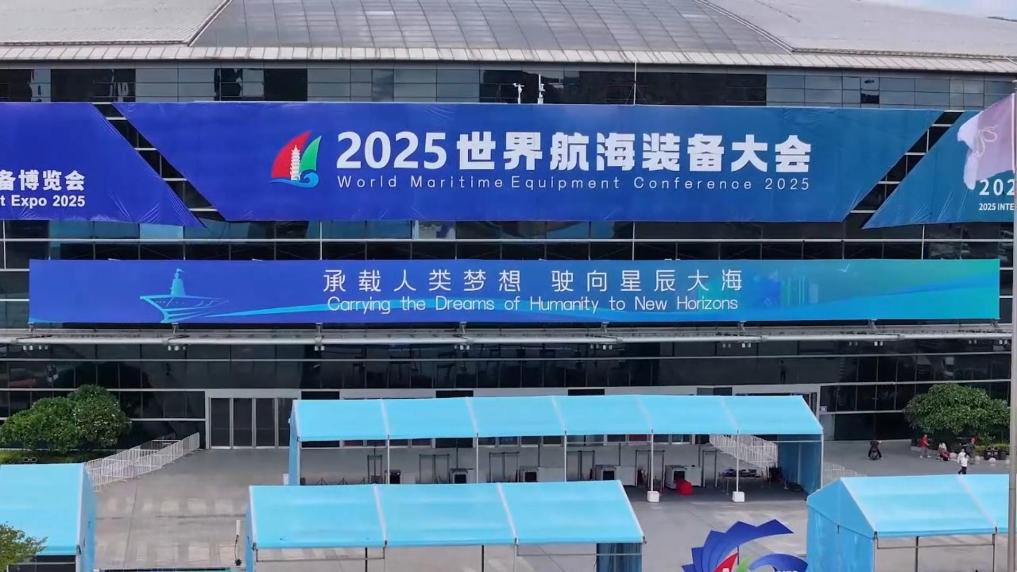Xinhua Headlines: China's historic socio-economic achievements over past five years
Source: Xinhua
Editor: huaxia
2025-10-17 22:06:49
* This year marks the final lap for China's implementation of its 14th Five-Year Plan (2021-2025). The country has achieved groundbreaking progress, transformative breakthroughs and historic accomplishments during the period.
* China's unwavering commitment to advancing its reform and opening-up has been a major driving force behind the country's remarkable achievements in economic and social development during the period.
* The scientific formulation and continuous implementation of the five-year plans constitute vital experience in China's governance system, and demonstrate the significant political strength of socialism with Chinese characteristics.
BEIJING, Oct. 17 (Xinhua) -- This year marks the final lap for China's implementation of its 14th Five-Year Plan (2021-2025). The country has achieved groundbreaking progress, transformative breakthroughs and historic accomplishments during the period.
On the latest episode of China Economic Roundtable -- an all-media talk show hosted by Xinhua News Agency -- senior officials of China's key economic departments shared policy insights on this remarkable progress, including reflections on a resilient economy, innovative and green development, and unwavering opening-up.
NEW LEAP FORWARD
"Despite a complex and fast-changing external environment during the 14th Five-Year Plan period, China's economy has maintained stable growth, serving as a key source of momentum for the uncertain global economy," said Wang Guanhua, an official of the National Bureau of Statistics.
Wang noted that China's annual economic growth rate averaged 5.5 percent from 2021 to 2024, and that the country contributed an approximate annual average of 30 percent of global growth during the period, becoming a crucial stabilizer and driving force for the world economy.
China's remarkable progress in high-quality development over the past five years was powered by continuous innovation and a sustained shift toward green growth, which has offered significant value for the world.
By fostering new quality productive forces adapted to local conditions, the country has deepened its integration of scientific research and industrial application, yielding substantial outcomes.
Last year, China's research and development spending had increased by nearly 50 percent when compared to the end of the 13th Five-Year Plan period. This year, the country broke into the top 10 on the Global Innovation Index, making it one of the world's fastest-rising innovators over the past decade.
Advancements were achieved in the fields of nuclear power, high-speed rail and marine engineering equipment. In areas such as artificial intelligence, quantum technology, manned spaceflight and deep-space exploration, China has delivered pioneering breakthroughs, achieving multiple global milestones.
China has also achieved notable progress in green development over the past five years, according to He Jianwu from the Development Research Center of the State Council.
In a historic first, renewable energy installation has surpassed that of thermal power -- a landmark shift for a country long reliant on coal. In the first nine months of this year, both the production and sales of new energy vehicles in China exceeded 10 million units.
Official data also shows that in 2024, China's energy consumption per unit of GDP was 11.6 percent lower than in 2020, ranking the country among the global leaders in energy intensity decline.
"China has successfully explored a path that integrates economic growth with green development, making tremendous contributions to the global response to climate change and the global green transition," he added.
DEEPENED REFORM, WIDER OPENING-UP
China's unwavering commitment to advancing its reform and opening-up has been a major driving force behind the country's remarkable achievements in economic and social development during the 14th Five-Year Plan period.
He Jianwu outlined a series of measures the country has taken to deepen reform, including those to accelerate the development of a unified national market and roll out a law on promoting the private sector.
Over the past five years, China has accelerated its high-standard opening-up and expanded its win-win cooperation despite global headwinds.
The country has expanded both voluntary and unilateral opening-up, and offered zero-tariff treatment on 100 percent of tariff lines to the world's least developed countries and African nations that have diplomatic ties with China.
China's pilot free trade zones have aligned actively with high-standard international economic and trade rules for testing and innovation, and its negative list for foreign investment has been shortened consistently.
Upbeat economic data has reflected the combined effects of these measures and policy initiatives. China's foreign trade has surged, with its total goods imports and exports surpassing the 6-trillion-U.S. dollar threshold during the 14th Five-Year Plan period.
From 2021 to 2024, the average annual growth rate for trade in goods was 8.1 percent -- 2.6 percentage points higher than during the 13th Five-Year Plan period. Cumulative imports of consumer goods hit 7.4 trillion yuan (about 1.04 trillion U.S. dollars), satisfying the domestic consumption upgrade and providing a vast market for global businesses.
"Robust foreign trade has strengthened the resilience of our economy," He said, adding that China's diversified partners, strengthened services sector and key intermediate goods trade have consolidated its role in global supply chains.
BLUEPRINT DRIVING MODERNIZATION
China's five-year plans serve as comprehensive blueprints for the country's economic and social advancement, outlining goals, strategies and priorities for each planning cycle.
The scientific formulation and continuous implementation of these plans constitute vital experience in China's governance system, and demonstrate the significant political strength of socialism with Chinese characteristics, experts have noted.
"Guiding economic and social development through five-year plans embodies the success code of China's governance, and has contributed Chinese wisdom and solutions to developing nations pursuing modernization," said Xiang Wei, an official of the National Development and Reform Commission.
He emphasized that these plans allow for the phased implementation of long-term goals, incorporating broad public opinion and mobilizing social forces to align efforts with national strategic objectives, thereby leveraging the unique advantage of concentrating resources to accomplish major undertakings.
"We are using the certainty of planning to cope with external uncertainties," he said.
The 15th Five-Year Plan (2026-2030) for National Economic and Social Development is seen as another mobilization of efforts, and its overall deployment is intended to build on momentum and advance Chinese modernization.
While there is still a long way to go and there are many challenges to overcome, the Chinese economy has the confidence and capability to brave the headwinds and move forward on its new journey, Wang said.
(Video reporters: Cao Yanyu, Du Rui, Chen Meng, Xiao Zhengqiang, Hao Yilin; video editors: Zheng Xin, Liu Xiaorui, Zheng Qingbin) ■












Comments